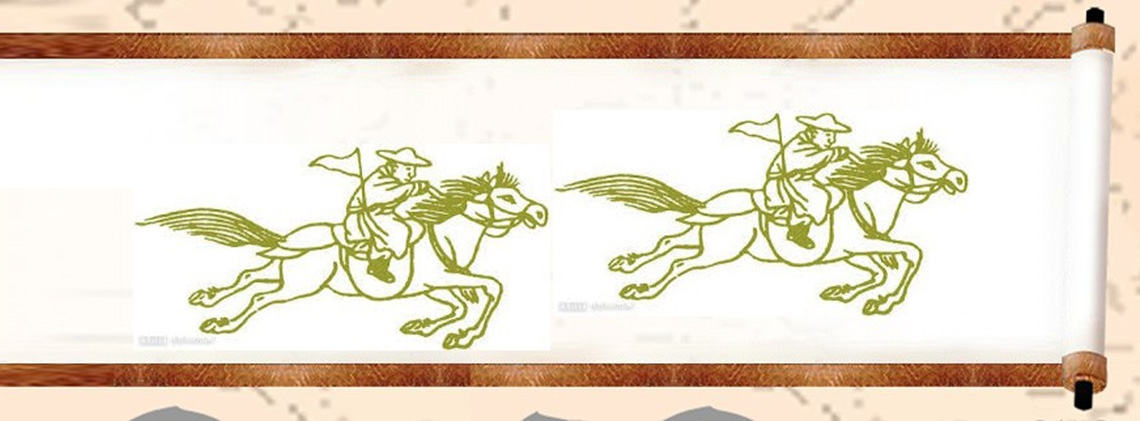
Posthouses and Postal Delivering Services in Ancient China
Splendid
Chi Culture
Topic
Posthouses and Postal Delivering Services in Ancient China
Courier and post were forms of communication and transportation in ancient China. In the pre-Qin era (times before 221 BCE), messages delivered by vehicles were called chuan (transmitted by relays); those delivered by foot were called you (courier), and those delivered by horse were called yi (post horse). The relays set up for post horses between stations were called zhi, and the rest place for postal couriers was called ting. Compared with the world’s postal history, the Chinese postal system was established relatively early—the structure was complete and the work was efficient. It is thus evident that ancient post station was one of the masterpieces created by Chinese civilization.
By the Shang and Zhou dynasties (ca. 1600–256 BCE), a postal system was in operation. The unification of the realm by the Qin (221–206 BCE) and Han (206 BCE–220 CE) dynasties brought improvements to the system. In addition to traveling over land routes, the post during the Tang (618¬–907) and Song (960–1279) period also traveled over water routes which were significantly developed. In the Yuan dynasty (1271–1368), the postal system experienced record progress, causing it to surpass any other postal system in the world. Postal operations and services played an important role in terms of managing and administrating the vast territory of China during the Ming (1368–1644) and Qing (1644–1911) era. However, in later years, when Western technology and mail systems were introduced, weaknesses and disadvantages in the traditional Chinese postal system became increasingly obvious. In the late Qing dynasty, some visionaries petitioned the court for permission to set up a new postal system. In 1906, the Qing court established a new agency called “Youchuan bu” (Ministry of Communication). Afterwards, all the old postal stations were replaced by modern postal operations. During the Republican period, the name was changed to “Jiaotong bu” (Ministry of transportation and communications) and then, after the establishment of the People’s Republic of China, it was changed to “Jiaotong Yunshu bu” (Ministry of Transport).
It was only starting in the Qin and Han dynasties that vehicles became prevalent, and animal-powered transport such as post horses were used for land transport. At various times in China’s history dogs were sometimes used for this purpose. As a result of using animal power, the speed of the post increased noticeably. In addition to postal vehicles, palanquins, and litters chairs were also used as means of transportation. Water routes developed considerably starting in the Six Dynasties (222–589). After the Sui and Tang dynasties, the economic and cultural center of the nation moved eastward and water towns in the southern region of the lower Yangtze River became increasingly important, and water stations, likewise, played an even more prominent role.
Ancient Chinese post houses mainly provided accommodations and food for government officials and their families. Post houses for government officials developed well during the Tang period. In addition to the guesthouse itself, special attention was also paid to landscaping the surrounding area. Places where travelers could stay had many different names in ancient China, for example: keshe (guest house), keguan (state guest house), nilü (inn), binguan (hostel), kezhan (tavern) and lüdian (hotel ). Common people, when they traveled, would stay at privately-run inns . The prosperity of such inns was closely related to advancement of commerce, as well as development of the society.
The social status of the travel-worn post house officers was quite humble. Every courier was required to wear a leather belt with bells, and carry a weapon and raincoat along with the documents; at night, the couriers also had to carry torches. On narrow roads, post house officers and those who normally rode in the vehicle had to dismount and carry the loads on their backs. The officers used cloth-wrappers and boards to protect the documents from damage; they also used lacquered or oiled silk to protect the papers from getting wet. The documents received by each post house were forwarded to the next destination.
During the Han dynasty, there were strict stipulations regarding postal deliveries and punishments for infractions and mis-deliveries. If the instructions were miswritten, the person responsible for the mistake was also punished.
The development of Chinese ancient post houses played a significant role in administrative management, national defense, economic growth, and cultural dissemination. The formation, cohesion, and progress of Chinese culture were all closely related to the development of transportation. Among all the possible factors, the development of post houses made the greatest contribution.



